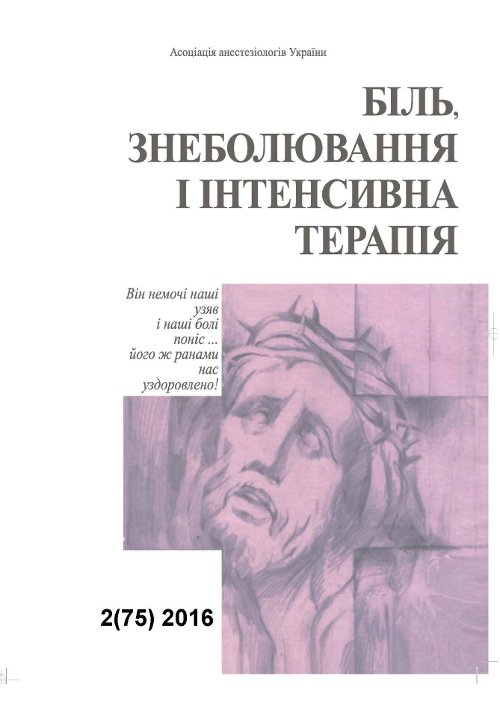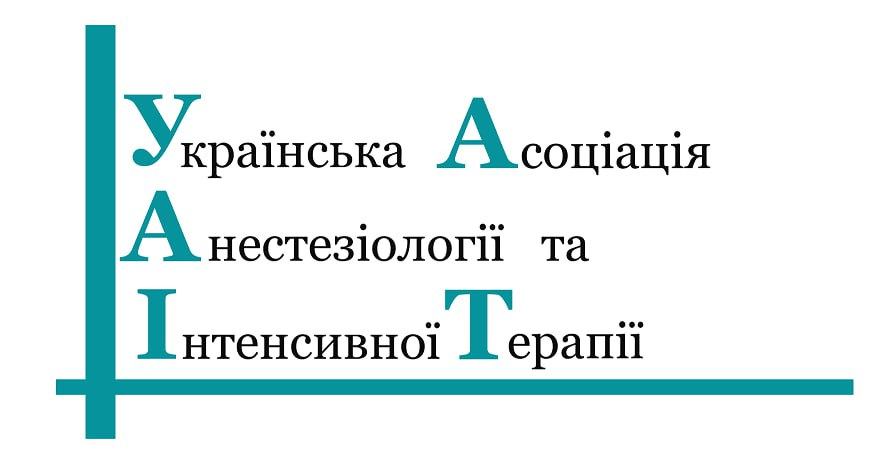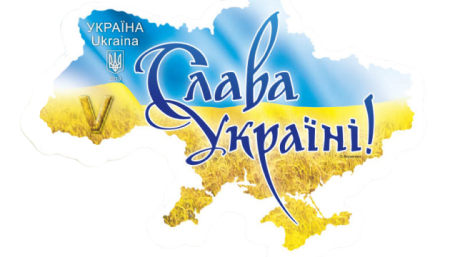Кристалоїднi розчини у дiтей
DOI:
https://doi.org/10.25284/2519-2078.2(75).2016.84176Ключові слова:
Діти, збалансовані сольові розчини, внутрішньовенна інфузія рідиниАнотація
Внутрiшньовенна iнфузiйна терапiя останнiм часом має значну тенденцiю свого розвитку. Рекомендацiї Holliday MA, Segar WE., що увiйшли в основу проведення рiдинної терапiї, привели до переважного використання гiпотонiчних розчинiв. Гiпонатрiємiя, яка часто розвивається у дiтей i має ряд серйозних ускладнень, була викликана, в основному, їх використанням. Щоб уникнути розвитку гострої гiпонатрiємiї, було рекомендовано внутрiшньовенне введення 0,9% NaCl. Однак, кислотно-основнi порушення за рахунок розвитку гiперхлоремiчного ацидозу обмежують його застосування.
В останнi роки створюються i активно застосовуються розчини, що не тiльки сприяють корекцiї водного балансу, електролiтних порушень, кислотно-основного стану, але i володiють органопротективним ефектом, що, безумовно, дуже важливо. Тому використання збалансованих сольових розчинiв якостi iзотонiчної рiдиниви бору, повинно мати перевагу перед введенням 0,9% фiзiологiчного розчину.
Мета даного огляду надати короткий виклад нинiшньої концепцiї для внутрiшньовенного введення рiдини в педiатричних вiддiленнях iнтенсивної терапiї. Викладено певнi постулати, яких потрiбно дотримуватися, призначаючи дитинi внутрiшньовенну рiдину. Описанi певнi переваги i недолiки сольових розчинiв, якi застосовуються у дiтей. Бiльшою мiрою порiвнюється 0,9% NaCl iз збалансованим iзотонiчним сольовим розчином Стерофундiном. Вiн має концентрацiю натрiю (140 ммоль/л) i значно бiльш низьку концентрацiю хлориду (127 ммоль/л), а також калiй, магнiй, що бiльш наближене до складу плазми. В оглядi представленi данi по сольовому розчину Рiнгер-лактат, який має дещо знижену концентрацiю натрiю (131 ммоль/л) у порiвняннi з нормальним фiзiологiчним розчином i Стерофундiном. Низька концентрацiя натрiю i вмiст лактату дещо обмежують його застосування, особливо при нейрохiрургiчнiй патологiї.
Посилання
Arieff A. I.Hyponatraemia and death or permanent brain damage in healthy children / A. I. Arieff, J. C.Ayus, C. L.Fraser //BMJ. – 1992. – Vol. 304, N 6836. – P. 1218-22. https://doi.org/10.1136/bmj.304.6836.1218
Hypotonic versus isotonic saline in hospitalised children: A systematic review /K.Choong, M. E. Kho, K. Menon, D. Bohn // Arch. Dis. Child. – 2006. – Vol. 91, N 10. – P. 828-35. https://doi.org/10.1136/adc.2005.088690
Acute hyponatremia related to intravenous fluid administration in hospitalized children: An observational study /E. J. Hoorn, D.Geary, M.Robb, M. L.Halperin, [et al.]// Pediatrics. – 2004. – Vol. 113, N5. – P. 1279-1284. https://doi.org/10.1542/peds.113.5.1279
Hyponatraemia-related death after paediatric surgery still exists in France / Y. Auroy, D. Benhamou, F. Pequignot, E.Jougla, [et al.] //Br. J.Anaesth. – 2008. – Vol. 101, N 5. – P. 741. https://doi.org/10.1093/bja/aen282
McRae R. G. Iatrogenic hyponatremia: A cause of death following pediatric tonsillectomy/ R. G. McRae, A.J.Weissburg, K. W. Chang // Int. J.Pediatr.Otorhinolaryngol. – 1994. – Vol. 30, N 3. – P. 227-232. https://doi.org/10.1016/0165-5876(94)90064-7
Duke T. Hyponatraemia and seizures in oncology patients associated with hypotonic intravenous fluids /T. Duke, S. Kinney, K. Waters // J.Paediatr. Child. Health. – 2005. – Vol. 41, N 12. – P. 685-686. https://doi.org/10.1111/j.1440-1754.2005.00760.x
Plain D5W or hypotonic saline solutions post-op could result in acute hyponatremia and death in healthy children. ISMP Med Saf Alert 2009 Aug 13 [cited 2009 Sept 15];14(16):1-4. http://ismp.org/newsletters/acutecare/articles/20090813.asp (Accessed August 7, 2012).
Hyponatremia in children. Ottawa (ON): Canadian Medical Protective Association; 2008 Dec: IL0840-1-E [cited 2009 Sept 16]: http://www.cmpa-acpm.ca/cmpapd04/docs/resource_files/infoletters/2008/com_il0840_1-e.cfm (Accessed August 7, 2012).
Report of the Paediatric Death Review Committee and Deaths Under Five Committee, Toronto (ON) // Office of the chief Coroner Province of Ontario. – Toronto, 2007. – P. 19-20.
Paediatric Research Society. Hyponatraemia and hypokalaemia during intravenous fluid administration / K. Armon, A.Riordan, S.Playfor, [et al.]// Arch. Dis. Child. – 2008. – Vol. 93, N 4. – P. 285-287. https://doi.org/10.1136/adc.2006.093823
Moritz M. L. Prevention of hospital-acquired hyponatremia: A case for using isotonic saline /M. L. Moritz, J. C. Ayus// Pediatrics. – 2003. – Vol. 111. – P. 227-230. https://doi.org/10.1542/peds.111.2.227
Halberthal M. Lesson of the week: Acute hyponatraemia in children admitted to hospital: retrospective analysis of factors contributing to its development and resolution / M.Halberthal, M. L.Halperin, D. Bohn//BMJ. – 2001. – Vol. 322, N 7289. – P.780-782. https://doi.org/10.1136/bmj.322.7289.780
Holliday M. A. The maintenance need for water in parenteral fluid therapy /M. A. Holliday, W. E. Segar // Pediatrics. – 1957. – Vol. 19, N 5. – P.823-832.
Александрович Ю.С. Современные принципы инфузионной терапии в педиатрической практике /Ю. С.Александрович, В. И. Гордеев, К. В. Пшениснов // Российский вестник детской хирургии, анестезиологии и реаниматологии. – 2011. – No 3.
Steurer M.A. Infusion therapy for neonates, infants and children /M. A. Steurer,T. M. Berger // Anaesthesist. – 2011. – Volume 60(1). – P. 10–22. https://doi.org/10.1007/s00101-010-1824-5
Holliday M.A. Reducing errors in fluid therapy management / M. A. Holliday,W. E. Segar, A.Friedman // Pediatrics. – 2003. – Vol. 111, N 2. – P. 424-425.
Rapid saline infusion produces hyperchloremic acidosis in patients undergoing gynecologic surgery/ S.Scheingraber, M.Rehm, C.Sehmisch, U.Finsterer // Anesthesiology. – 1999. – Vol. 90, N 5. – P. 1265-1270. https://doi.org/10.1097/00000542-199905000-00007
The effect of different crystalloid solutions on acid-base balance and early kidney function after kidney transplantation /N.Hadimioglu, I.Saadawy, T.Saglam, Z.Ertug, [et al.]// AnesthAnalg. – 2008. – Vol. 107. – P. 264–269. https://doi.org/10.1213/ane.0b013e3181732d64
Normal saline versus lactated Ringer’s solution for intraoperative fluid management in patients undergoing abdominal aortic aneurysm repair: an outcome study / A.Gottlieb, P.Schoenwald, M. Popovich, J. Sprung, [et al.] // AnesthAnalg. – 2001. – Vol. 93. – P. 817–822. https://doi.org/10.1097/00000539-200110000-00004
Houghton J. Choice of isotonic perioperative fluid in children / J. Houghton, N.Wilton //AnesthAnalg.– 2011. – Vol. 112, N 1. – P. 246-247. https://doi.org/10.1213/ane.0b013e3181f70814
Beck C. E. Hypotonic versus isotonic maintenance intravenous fluid therapy in hospitalized children: A systematic review / C. E.Beck// Clin. Pediatrics. – 2007. – Vol. 46, N 9. – P. 764-770. https://doi.org/10.1177/0009922807303041
Burrows F. A. Inappropriate secretion of antidiuretic hormone in a postsurgical pediatric population / F. A. Burrows, J. G. Shutack, R. K. Crone // Crit. Care. Med. – 1983. – Vol. 11, N 7. – P. 527-531. https://doi.org/10.1097/00003246-198307000-00009
Brazel P. Inappropriate secretion of antidiuretic hormone in postoperative scoliosis patients: The role of fluid management / P. Brazel, I. B. McPhee // Spine. – 1996. – Vol. 21, N 6. – P. 724-727. https://doi.org/10.1097/00007632-199603150-00013
Isotonic is better than hypotonic saline for intravenous rehydration of children with gastroenteritis: a prospective randomised study /K. A. Neville, C. F. Verge, A. R. Rosenberg, [et al.] // Arch. Dis. Child. – 2006. – Vol. 91, N 3. – P. 226-232. https://doi.org/10.1136/adc.2005.084103
The use of isotonic fluid as maintenance therapy prevents iatrogenic hyponatremia in pediatrics: A randomized, controlled open study / P. A. Montañana, V. Modesto, V.Alapont, A. P.Ocón, [et al.] //Pediatr. Crit. Care. Med. – 2008. – Vol. 9, N6. – P. 589-597. https://doi.org/10.1097/pcc.0b013e31818d3192
Yung M. Randomised controlled trial of intravenous maintenance fluids / M. Yung, S. Keeley // J. Paediatr. Child. Health. – 2009. – Vol. 45, N 1-2. – P. 9-14. https://doi.org/10.1111/j.1440-1754.2007.01254.x
Hypotonic versus isotonic maintenance fluids in critically ill children: A multicenter prospective randomized study /C. Rey, M. Los-Arcos,A. Hernández, [et al.] // ActaPaediatrica. – 2011. – Vol. 100, N 8. – P. 1138-1143. https://doi.org/10.1111/j.1651-2227.2011.02209.x
Intravenous fluid regimen and hyponatraemia among children: a randomized controlled trial / L. Kannan, R. Lodha, S. Vivekanandhan, [et al.] // Pediatr. Nephrol. – 2010. – Vol. 25, N 11. – P. 2303-2309. https://doi.org/10.1007/s00467-010-1600-4
Hypotonic versus isotonic maintenance fluids after surgery for children: A randomized controlled trial / K.Choong, S.Arora, J. Cheng, [et al.]//Pediatrics. – 2011. – Vol. 128, N 5. – P. 857-866. https://doi.org/10.1542/peds.2011-0415
A randomized controlled trial of isotonic versus hypotonic maintenance intravenous fluids in hospitalized children / T. G . Saba, J. Fairbairn, F. Houghton, [et al.] // BMC Pediatrics. – 2011. – Vol. 11. – P. 82. https://doi.org/10.1186/1471-2431-11-82
Perioperative Crystalloid and Colloid Fluid Management in Children: Where Are We and How Did We Get Here? /A.G. Bailey, P.P. McNaull, E. Jooste, J.B. Tuchman // Pediatric Anesthesiology. – 2010. – Vol. 110, N 2. – P. 375-390. https://doi.org/10.1213/ane.0b013e3181b6b3b5
Royal Children’s Hospital Melbourne. Clinical practice guidelines / Intravenous fluids. – 2013.
Hospital for Sick Children, Toronto. Clinical practice guidelines/Fluid and electrolyte administration in children, 2007 [revised June 2010; reviewed January 2011]: http://www.sickkids.ca/clinical-practice-guidelines/clinical-practice-guidelines/Fluid-and-Electrolyte-Administration-in-Children.html (Accessed August 2, 2012).
National Patient Safety Agency. Background information, Patient safety alert 22: Reducing the risk of hyponatraemia when administering intravenous infusions to children. London (UK), March 2007: http://www.nrls.npsa.nhs.uk/resources/?entryid45=59809(Accessed August 13, 2012).
Dodge С. Crystalloid and colloid therapy / С. Dodge, D.D.Glass // SeminAnesth. – 1982. – N 1. – P. 293-301.
Tranbaugh R. F. Crystalloid fluid / R.F. Tranbaugh, F. R. Lewis // Dailey R. H., Callaham M. Controversies in trauma management. Clinics in emergency medicine. – Churchill Livingstone, 1985. – P. 121-133.
Shackford S.R. Fluid resuscitation of the trauma victim / S.R.Shackford,A. Perel// Trauma. Problems in criticalcare. – Philadelphia: J.B.Lippincott, 1987. – Vol. 1. – P. 576-587.
Horton J.Cardiac responset of luid resuscitation from hemorrhagic shock / J. Horton, R. Landreau, T.Tuggle // Surg. Gynecol. Obstet. –1985. – Vol. 260. – P. 444-452.
Steurer M.A. Infusion therapy for neonates, infants and children /M. A. Steurer,T. M. Berger // Anaesthesist. – 2011. – Volume 60(1). – P. 10–22. https://doi.org/10.1007/s00101-010-1824-5
Murat I. Perioperative fluid therapy in pediatrics /I. Murat, M.C. Dubois //PediatricAnesthesia. – 2008. – P. 363-370. https://doi.org/10.1111/j.1460-9592.2008.02505.x
Handy J. M. Physiological effects of hyperchloraemia and acidosis /J. M.Handy, N.Soni// Br. J. Anaesth. – 2008. – Vol. 101. – P. 141-150. https://doi.org/10.1093/bja/aen148
A comparison of albumin and saline for fluid resuscitation in the intensive care unit /S.Finfer, R.Bellomo, N. Boyce [et al.]// New. Engl. J. Med. – 2004. – Vol. 350. – P. 2247-2256. https://doi.org/10.1056/nejmoa040232
Assessment of hemodynamic efficacy and safety of 6% hydroxyethylstarch 130/0.4 vs. 0.9% NaCl fluid replacement in patients with severe sepsis: the CRYSTMAS study / B.Guidet, O. Martinet, T. Boulain, [et al.]// Crit. Care. – 2012. – Vol. 16. – P. R94. https://doi.org/10.1186/cc11358
Brain Trauma Foundation American Association of Neurological Surgeons Congress of Neurological Surgeons. Guidelines for the management of severe traumatic brain injury / Brain Trauma // J.Neurotrauma. – 2007. – Vol. 24. – S1-S106.
Hyperglycemic crisis in adult patients with diabetes (Consensus Statement) / A.E. Kitabchi, G. E. Umpierrez, J.M. Miles [et al.] // Diabetes Care. – 2009. – Vol. 32. – P.1335-1343. https://doi.org/10.2337/dc09-9032
Fluid resuscitation in neonatal and pediatric hypovolemic shock: a Dutch Pediatric Society evidence-based clinical practice guideline /N. Boluyt, C.W. Bollen, A.P. Bos [et al.]// Intensive Care Med. – 2006. – Vol. 32. – P. 995-1003. https://doi.org/10.1007/s00134-006-0188-4
Major complications, mortality, and resource utilization after open abdominal surgery: 0.9% saline compared to Plasma-Lyte/ A.D. Shaw, S.M. Bagshaw, S.L. Goldstein, [et al.]// Ann. Surg. – 2012. – Vol. 255. – P. 821-829. https://doi.org/10.1097/sla.0b013e31825074f5
Association between a chloride-liberal vs chloride-restrictive intravenous fluid administration strategy and kidney injury in critically ill adults /N.M. Yunos, R. Bellomo, C. Hegarty, [et al.]// JAMA. – 2012. – Vol. 30. – P. 1566-1572. https://doi.org/10.1001/jama.2012.13356
Kellum J. A.Hyperchloremic acidosis increases circulating inflammatory molecules in experimental sepsis /J.A. Kellum, M. Song, E. Almasri// Chest. – 2006. – Vol. 130. – P. 962-967. https://doi.org/10.1378/chest.130.4.962
Influence of acidosis and hypoxia on liver ischemia and reperfusion injury in an in vivo rat model /B.H. Heijnen, Y. Elkhaloufi, I. Straatsburg [et al.] // J.Appl Physiol. – 2002. – Vol. 93. – P. 319-323. https://doi.org/10.1152/japplphysiol.01112.2001
Bonventre J. V. Effects of metabolic acidosis on viability of cells exposed to anoxia /J. V.Bonventre, J. Y.Cheung // Am. J. Physiol. – 1985. – Vol. 249. – P.149-159.
Morgan T. J. The meaning of acid-base abnormalities in the intensive care unit: part III—effects of fluid administration /T. J. Morgan // Crit. Care. – 2005. – Vol. 9. – P. 204-211. https://doi.org/10.1186/cc2946
Crystalloid or colloid fluid loading and pulmonary permeability, edema, and injury in septic and nonseptic critically ill patients with hypovolemia / M. Van der Heijden, J.Verheij, G. P. van Nieuw Amerongen[et al.]// Crit. Care Med. – 2009. – Vol. 37. – P. 1275-1281. https://doi.org/10.1097/ccm.0b013e31819cedfd
Sellards A. W. Tolerance for alkalis in Asiatic cholera /A. W.Sellards// Philippine J. Sci. – 1910. – N 5. – P. 363-390.
Hartmann A. F. Studies in the metabolism of sodium r-lactate. I. Response of normal human subjects to the intravenous injection of sodium r-lactate /A.F. Hartmann, M.J. Senn // J.Clin. Invest. – 1932. – N 11. – P. 327-335. https://doi.org/10.1172/jci100414
Crystalloids vs. colloids in fluid resuscitation. A systematic review / P.T. Choi, G.Yip, L.G. Quinonez, D.J. Cook // Crit. Care Med. – 1999. – Vol. 27. – P. 200-210. https://doi.org/10.1097/00003246-199901000-00053
Forderungen und Erwartungen an einen optimalen Volumenersatz /R. Zander, H. A. Adams, J. Boldt, [et al.] // Anästhesiol Intensivmed Notfallmed Schmerzther. – 2005. – Vol. 40(12). – P. 701-719. https://doi.org/10.1055/s-2005-870452
Zander R. Base Excess und Laktatkonzentration von Infusionslösungen und Blutprodukten / R. Zander // Anästhesiol Intensivmed Notfallmed Schmerzther. – 2002. – Vol. 37. – P. 359-363. https://doi.org/10.1055/s-2002-32242
Grifiith С.А. Natl Intravenous Therapy Association. – 1986. – N 9. – P. 480-3.
Berry M. N. The liver and lactic acidosis /M. N. Berry // Proc. R. Soc. Med. – 1967. – Vol. 60. – P. 1260-1262.
Siegal G. Basic Neurochemistry (molecular, cellular anmedica aspects) /G. Siegal, B. Agranoff, R. Albers // 5th ed. – N-Y: Raven Press, 1994. – 1080 p.
Hennes H-J. Schädel-Hirn-Trauma /H-J.Hennes// Neuroanästhesie / J-P. Jantzen, W. Löffler, Eds. Stuttgart, 2001.
Zander R. Fluid Management /R.Zander. – 2009. – P. 26.
##submission.downloads##
Опубліковано
Як цитувати
Номер
Розділ
Ліцензія
Авторське право (c) 2016 В. І. Снiсарь, С. В. Егоров

Ця робота ліцензується відповідно до Creative Commons Attribution-NonCommercial 4.0 International License.
Автори, які публікуються у цьому журналі, погоджуються з наступними умовами:
a. Автори залишають за собою право на авторство своєї роботи та передають журналу право першої публікації цієї роботи на умовах ліцензії Creative Commons Attribution-NonCommercial 4.0 International License, котра дозволяє іншим особам вільно розповсюджувати опубліковану роботу з обов'язковим посиланням на авторів оригінальної роботи та першу публікацію роботи у цьому журналі.
b. Автори мають право укладати самостійні додаткові угоди щодо неексклюзивного розповсюдження роботи у тому вигляді, в якому вона була опублікована цим журналом (наприклад, розміщувати роботу в електронному сховищі установи або публікувати у складі монографії), за умови збереження посилання на першу публікацію роботи у цьому журналі.
c. Політика журналу дозволяє і заохочує розміщення авторами в мережі Інтернет (наприклад, у сховищах установ або на особистих веб-сайтах) рукопису роботи, як до подання цього рукопису до редакції, так і під час його редакційного опрацювання, оскільки це сприяє виникненню продуктивної наукової дискусії та позитивно позначається на оперативності та динаміці цитування опублікованої роботи (див. The Effect of Open Access).








